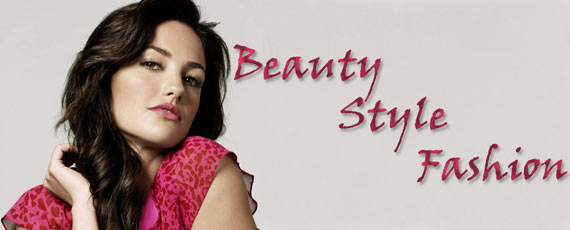
All About Human Physical Appearance
Attitudes about physical appearance may be influenced by advertising. Magazine ad for Obsession perfume, by Calvin Klein.Variation in the physical appearance of humans is believed by anthropologists to be an important factor in the development of personality and social relations in particular physical attractiveness. There is a relatively low sexual dimorphism between human males and females in comparison with other mammals.
However humans are acutely sensitive to variations in physical appearance for reasons of evolution.
Some people have traditionally linked some differences in personal appearance such as skeletal shape with race, such as prognathism or elongated stride (but this is a controversial and sensitive matter).
Some differences in human appearance are genetic, others are the result of age or disease, and many are the result of personal adornment.Different cultures place different degrees of emphasis on physical appearance and its importance to social status and other phenomena.
Physical Attractiveness
Physical attractiveness is the perception of an individual as physically beautiful by other people. Some aspects of how a person is judged beautiful are universal to all cultures, whereas others are restricted to particular cultures or time periods. Physical attractiveness can have a huge effect on how people are judged - people tend to attribute positive characteristics such as intelligence and honesty to attractive people without consciously realizing it.
Physical attractiveness is distinct from sexual attractiveness. For example, people often regard children - both human and animal - as being highly physically attractive or 'cute' because of their relatively large eyes, but without sexual attraction.
Judgment of physical attractiveness
One's own culture has a strong effect in determining who a person considers as physically attractive. As children grow up, they learn what their culture considers attractive. Movies and cartoons, frequently portray the villain as being ugly, whereas the protagonist is depicted as attractive. Children are shown examples of what is considered as beauty in the form of dolls and pictures on magazine covers. Perception of what is considered as attractive and appealing is also very heavily influenced by other dominant cultures and the impact of their value systems.
Universal Correlates of Beauty
That said, cultures tend to agree on what is attractive. There is a strong correlation between judgements of attractiveness between cultures. Furthermore, infants, who presumably have not yet been affected by culture, tend to prefer the same faces considered attractive by adults. This implies that a large part of attractiveness is determined by inborn human nature, not nurture.
Strong correlations between attractiveness and particular physical properties have been found, across cultures. One of the more important properties is symmetry, which is also associated with physical health. Large clear eyes are also important.
Facial Symmetry and Golden Ratio
Facial symmetry is seen as a universal determinant of health and therefore of beauty. The facial symmetry is based on the universal Golden ratio of 1.618. It was also the very ratio of the Vitruvian Man by Leonardo da vinci. A person of either gender who is considered as attractive in various cultures have been found to have facial symmetry based on the golden ratio of 1:1.618. Plastic surgeon Stephen Marquardt developed an ideal beauty mask marked with various outlines of facial features based on the golden ratio. The faces that are judged as most attractive are found to fit the mask.
Waist-to-Hip Ratio and Female Attractiveness
Scientists have discovered that the waist-to-hip ratio (WHR) is a significant factor in judging female attractiveness. Women with a 0.7 WHR (waist circumference that is 70% of the hip circumference) are invariably rated as more attractive by men, regardless of their culture. Such diverse beauty icons as Marilyn Monroe, Twiggy, Sophia Loren, Kate Moss, and the Venus de Milo all have ratios around 0.7. The ratio signals fertility-as they age, women's waists thicken as their fertility declines.
Proportion of Body Mass to Body Structure
The Body Mass Index (BMI) is another important universal determinant to the perception of beauty. The BMI refers to the proportion of the body mass to the body structure. However, in various cultures, the optimal body proportion is interpreted differently due to cultural learnings and traditions. The Western ideal considers a slim and slender body mass as optimal while many ancient traditions and Asian societies considers an embonpoint (http://en.wiktionary.org/wiki/Embonpoint) or plump body-mass as appealing. In either case the underlying rule applied in determining beauty is the BMI and hence displays how cultural differences of beauty operate on universal principles of human evolution.
The slim ideal does not consider an emaciated body as attractive, just as the full-rounded ideal does not celebrate the over-weight or the obese. The cultural leanings are therefore just social emphasis on specific phenotypes within a parameter of optimal BMI.
The attraction for a proportionate body also influences an appeal for erect posture.
Prototypicality as Beauty
Besides biology and culture, there are other factors determining physical attractiveness. The more familiar a face seems, the more highly it is judged, an example of the mere exposure effect. It is seen that when many faces are combined into a composite image (through computer morphing), people find the resultant image as familiar and attractive, and even more beautiful than the faces that went into it. One interpretation is that this shows an inherent human preference for prototypicality. That is, the resultant face emerges with the salient features shared by most faces and hence becomes the prototype. The prototypical face and features is therefore perceived as symmetrical and familiar. This reveals an "underlying preference for the familiar and safe over the unfamiliar and potentially dangerous" (Berscheid and Reis, 1998). However, critics of this interpretation point out that compositing computer images also has the effect of removing skin blemishes such as scars and generally softens sharp facial features.
Classical conceptions of beauty are essentially a celebration of this prototypicality. It celebrates the extra-ordinary (from the latin root meaning over or extremely-ordinary) as the prototype or most beautiful.
The phenotype of one's own mother during the early years of childhood becomes the basis for the perception of optimal body mass index (BMI). This shows the importance of prototypicality in the judgment of beauty, and also explains the emergence of similarity of the perception of attractiveness within a community or society, which shares a gene pool.
Other Determinants of Female Beauty
Although it is said that "beauty is in the eye of the beholder", studies have shown that there are many other universal or near-universal qualities which make human females attractive to males. In addition to the predictors of good health and reproductive fitness, these include facial features which may stimulate the male sexual response by their resemblance to aroused female genital areas, and features which resemble those of human infants, who are universally appealing to both sexes of a species.
Among these other determinants are:
- Symmetry of features: an indicator of lack of disease or injury
- Clear complexion: indicator of health
- Contrasting colors and features: such as well-delineated eyebrows, dark lashes, dark eyes/light face or light eyes/dark face; these heighten the features of attraction, perhaps a holdover from primitive forebears with less acute vision
- Large, symmetrical, white teeth: indicator of reproductive vigor and ability to defend young; also health and contrast
- Prominent zygomas (cheek bones), especially with a blush of color: paired, rounded forms, especially if pigmented, stimulate the same male response as the flushed buttocks of simian females in mating position
- Thick, vivid lips: as for #5, the genital parallel is inescapable
- Large, widely spaced eyes: paired, rounded forms; also similar to a baby's appearance
- Upturned nose revealing nostril openings: combination of paired, rounded forms with resemblance to baby's appearance
- Ovoid face, small chin, lack of facial hair: similar to a baby's appearance
- Thick, lustrous hair: except as indicator of health, a poorly understood determinant
- Soft, higher pitched voice: indicator of non-maleness; submissiveness
Determinants of Male Physical Attractiveness
In the perception of male attractiveness by the female amongst humans, the single most important aspect determining physical attractiveness across cultures is the height of the male. For the woman, the man should be at least a few inches taller than her in order to be perceived as handsome. It would be preferable if the man is at least a little above the average in height in the given population of males. This implies that women look for signs of dominance and power as factors that determine male beauty. Other properties that enhance perception of male attractiveness are a slightly larger chest than the average, and an erect posture. Women seem more receptive to an erect posture than men, though both prefer it as an element of beauty.
During the social revolutions following the Second World War, the concept of male beauty became increasingly accepted by mainstream male populations in the West (previously, the idea of a man being preoccupied with his appearance was considered slightly abnormal). The beginning of the rise of the gay movement in the late-twentieth century Western world began to influence consideration of what was physically attractive in men. Today, certain characteristics are generally accepted throughout the Western world as signs of physical attractiveness. These are, of course, far from universal:
1) A muscular physique. This largely arose as a social backlash against effeminate homosexual men - in order to set themselves apart, many straight and gay men built muscular bodies as a symbol of their masculinity. Today, muscular physiques are generally desired by most men in the West, but extreme over-development can be viewed as undesirable to some women. However, muscularly defined bodies are generally considered highly attractive as an indicator that the man engages in sports and exercise. Amongst the gay community, a muscled body is generally considered highly attractive. Male physiques which are not accepted as attractive by large sectors of society are - fat (often perceived as a sign that the man is either lazy or greedy) and overly slim bodies (seen as indicative of the man not engaging in sports or exercise).
2) A unique hairstyle. However, the popularity of particular hairstyles changes constantly. Hairsyles are very easy to alter, are generally the least conformist expression of individuality, and as a result men can be regarded as attractive regardless of the form of their hair.
3) A facial structure which accentuates skeletal features. In Western societies, men and women of all races often agree that a face with pronounced cheekbones and often a heavily-set jaw is physically attractive. These are currently viewed as indicative of a masculine personality. These skeletal features in addition to a slightly elongated face can make the masculinity more heightened and the male much more attractive.

























